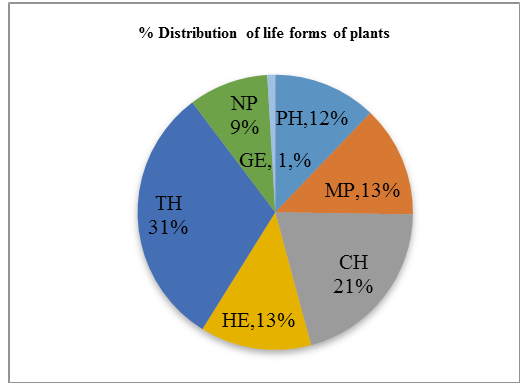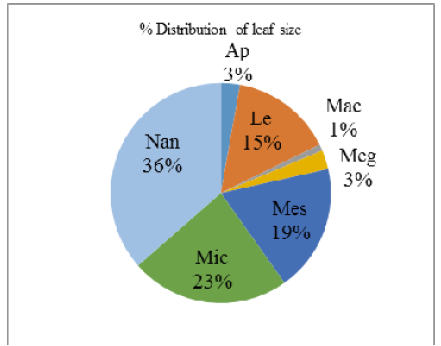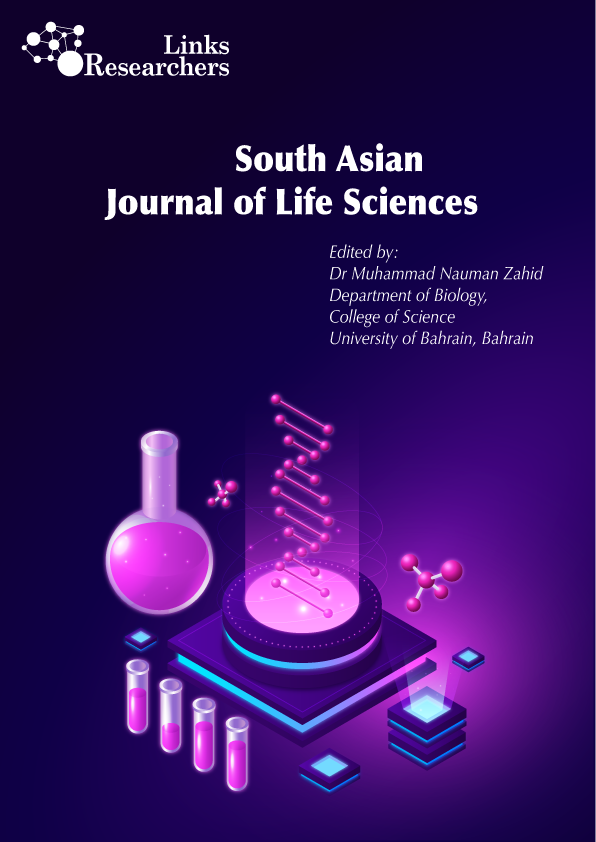South Asian Journal of Life Sciences
Research Article
Diversity of Life Form And Leaf Size Classes at Sheikh Buddin National Park, Dera Ismail Khan, Khyber Pakhtunkhwa, Pakistan
Atta Ullah*, Nasrullah Khan, Zahid Muhammad
Laboratory of Plant Ecology, Department of Botany, University of Malakand, Pakistan.
Abstract | Identification of flora is generally considered necessary around the globe, as it plays an important role to maintain the national reserves of the area. The research work was design to study the floristic composition and their biological characteristics at Sheikh Buddin National Park, Dera Ismail Khan, Pakistan. One hundred and seven plant species belonged to 90 genera’s and 49 families were collected. Of which, 26 species were trees, 20 species of shrubs, 53 species of herbs while 8 species of grasses. On the basis of life form, Therophytes were dominant with 37 plant species followed by Cryptophytes 24 species, Microphanerophyte 14 species, Phanrophytes and Hemicryptophytes both with 11 species and Nanophanerophytes with 10 plant species were recorded. Majority of leaf size spectrum of the plants species of study area, occupied by nanophylls (36%) followed by microphylls (23%). Fewer number of species (4%) were found with macrophylls and megaphyllus types of leaves.
Keywords | Diversity, Life form, Sheikh Buddin National Park, Pakistan
Editor | Muhammad Nauman Zahid, Quality Operations Laboratory, University of Veterinary and Animal Sciences, Lahore, Pakistan.
Received | April 03, 2015; Revised | August 26, 2015; Accepted | August 29, 2015; Published | September 30, 2015
*Correspondence | Atta Ullah, University of Malakand, Pakistan; Email: Attawazir71@yahoo.com
Citation | Ullah A, Khan N, Muhammad Z (2015). Diversity of life form and leaf size classes at Sheikh Buddin National Park, Dera Ismail Khan, Khyber Pakhtunkhwa Pakistan. S. Asian J. Life Sci. 3(1): 6-13.
DOI | http://dx.doi.org/10.14737/journal.sajls/2015/3.1.6.13
ISSN | 2311–0589
Copyright © 2015 Ullah et al. This is an open access article distributed under the Creative Commons Attribution License, which permits unrestricted use, distribution, and reproduction in any medium, provided the original work is properly cited.
Introduction
It is useful to study the flora of a country in ecological issues e.g. natural resources management and biological protection, determination the growth capacities and potentials of the country, identification and determination of plant species of the area. The Life-form of specie represents all the adaptive characters of a species, and thus it is an expression of the harmony between environment and a plant (Warming, 1909). The life form of plants depends on genetic as well as environmental factors, because the environmental factors can effects the formation of different critical forms of plants. Accordingly, in different communities, and different regions plants can have different life forms. In a particular region the dominant life form of plants represents the way plants have conciliated with that region (Zarezade et al., 2007). So far some techniques have been developed in order to categorize the life forms of plants, in which, Raunkiaerʼs system is more applicable and practical (Asri, 2003). This system is developed on the basis of position and degree of protection of the renewing buds, which renews the aerial plant body after the unfavorable environmental conditions. According to this system, all types of plant species can be classified into five main groups: phanerophytes, therophytes, cryptophytes, hemicryptophytes and chamaephytes.
The floristic composition of various life form and leaf size and their study in an area help us to assess the plant wealth, its potentiality of a given area and accepting the basic aspects of biology such as, isolation, speciation, evolution and endemism (Alsherif et al., 2013). A signal for macro and microclimate is supposed to be the life form spectra (Shimwell, 1971). It gives us the information’s about the disturbances of vegetation in an area. The percentage ratio of plants life form present in an area forms the biological spectrum. For the study of vegetation in an area it is an important physiognomic characteristic which is used widely (Amjad et al., 2012).
According to the World Conservation Union national park is a natural area selected for the protection of the ecological integrity of one or more ecosystems for the present and upcoming generation. It provides bases for the scientific, spiritual, recreational, educational and visitor’s opportunities (Forests and Biodiversity Information/Data Report Pakistan 2010). In the world there are 209,429 protected areas covering about 32,868,673 km2 area including 6,555 national parks (Deguignet et al., 2014).
Pakistan covers more than 79.9 million hectares of land consisting of several distinct physiological, morphological and geographical regions, such as mountains, Valleys, sandy deserts salt pans and coastline (Pak 4th national report, 2009). There are 26 national parks in Pakistan covering about 3% of the total land cover of the country. The largest one is that of Central Karakoram National Park, Gilgit-Baltistan covering an area 9, 73, 845 ha, while Toli Pir National Park located in Poonch District of Azad Jamu and Kashmir covering 1000 acre area is the smallest national park of Pakistan. Sheikh Buddin National Park is one of the most important national park of Pakistan and the 16th largest of the country (Figures 1 and 2) (Pakistan wild life foundation; accessed on 9/20/2014).
As up to date no proper attention is given to the flora of
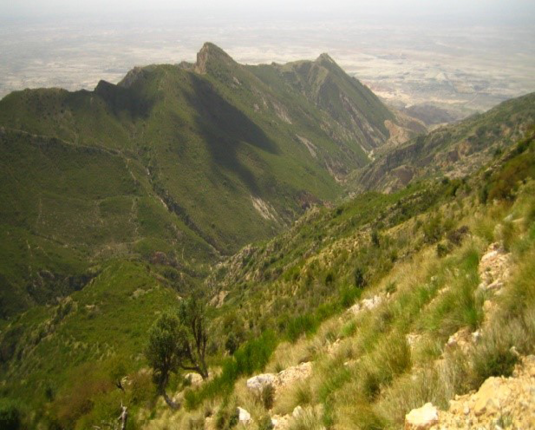
Figure 1 : A view of Sheikh Buddin National Park
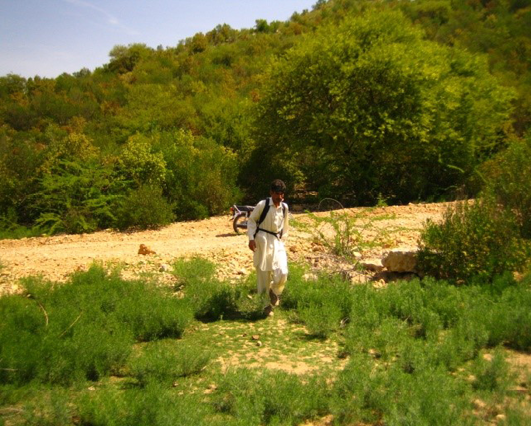
Figure 2 :Author in Sheikh Buddin National Park
SBNP and this area is completely neglected. Therefore the present work is to study the floristic composition, life form and leaf size spectrum of vegetation of the park.
Materials and methods
First of all required information’s about the area were collected through various means i.e. newspapers, reports, documents and local peoples. After that various field study trips were arranged to assess the flora and biological situations of the study area thoroughly from March 2013-december 2014. Plant specimens were collected, photographed, pressed, dried, and mounted on herbarium sheets, identified with the help of flora of Pakistan (Nasir and Ali, 1971-1995) and (Ali and Qaisar, 1971-2006) and available literature. All of the collected specimens were later verified by comparing with specimens available at the Herbarium Deportment of Botany University of Malakand, Chakdara Dir Lower. The determined plant specimens were preserved in the Herbarium department of botany university of Malakand, Chakadara, Dir lower. After that the plants were placed in several life form and leaf size classes by following Raunkaier (1934), Muller and Ellenberg (1974) and Cain and Castro (1959).
Study Area
The Dera Ismail Khan district (D. I. Khan) is located in the North- Western Pakistan and has an average elevation of 600 meters above sea level. It has a total land mass of 0.896 million hectare out of which 33% is cultivated (Khan, 2003). The districts of Tank and Lakki Marwat is situated on the north of the district, on the south Dera Ghazi Khan District of Punjab, on the east it is bounded by Mian Wali and Bhakkar districts of Punjab province, and on the west by Tribal Area of South Wazirestan agency (Marwat and Khan, 2008).
Table 1: Average monthly temperature and rain fall for the year 2013
|
Month |
Mean Temp (°C) |
Mean Rain Fall (mm) |
|
January |
12.2 |
85 |
|
February |
16 |
27.5 |
|
March |
22 |
45 |
|
April |
26.6 |
7 |
|
May |
33 |
0 |
|
June |
35 |
85 |
|
July |
33 |
14.2 |
|
August |
33 |
1 |
|
September |
32 |
0 |
|
October |
27.7 |
3 |
|
November |
20 |
6 |
|
December |
14 |
2.5 |
Source: Metrological Research Centre, D. I. Khan
The first settlement in Sheikh Buddin hills was by, a Sheikh Bahaudin (Sufi) in seventeenth century from whom it got the name of Sheikh Buddin. His offspring’s are still living here and are locally known as Pirs of Sheikh Badin. The second major settlement was made by the English government in 1860, who made it their summer head quarter. The park covers a total area of 15540 hectare. It is situated in the district of Dera Ismail khan while a part of it up to 5% lays in the district of Lakki Marwat. It was upgraded to the rank of national park in 1993 through the notification no# soft. Forest 1 (FFT) VIII. Peshawar: Dated, 15/07/1993 (Zahoor, 2010). The park is situated between 32.38°N and 70.94°E, with an elevation from 300- meters to 1350- meters. The study area receives annual rainfall from 200mm-280mm on an average, maximum during monsoon period, i.e. from June to September. It has four distinct seasons in one year i.e. spring, winter, summer and autumn. January is the coldest and July is the hottest month of the year. The mean maximum and minimum temperatures during winter are 20.3°C and 4.2°C respectively, compared to 30°C and 25°C during summer (Marwat et al., 2012). During study period the climatic conditions of the study area revealed that January and February are the coldest months while, June is the hottest month of the year. Maximum rainfall (85mm) occur in January (Table 1). The park is located near Dera Pezu of Laki Marwat district at a distance of about 8 km. someone could be approached to the Pezu Pass from Dera Ismail Khan in south and Laki Marwat in northwest via Indus Highway.
The hill ranges of Sheikh Buddin is a part of Marwat ranges. In it the Samana Suk Formation shows strata sets, consisting of thin, medium to thick and massive limestone beds. The bedding thickening is uneven to wavy within the vertical stacking of beds. Most parts of these ranges contains relatively large number of coarse grained limestone.
The Samana Suk Formation exposed at these Hills are mainly composed of dolomites, limestone and dolomitic limestone with interbedded calcareous shales/marls (Nizami and Sheikh, 2009).
Results
During the field survey a total of 107 plant species were recognized in the park area belonged to 90 different genera’s and 49 families. Among these 107 plant species 26 were trees, 20 shrubs, 53 were herbs and 8 plant species were grasses. The dominant families were (as mentioned in Table 2) Poaceae and Lamiaceae by having 8 species each, followed by Asteraceae with 7 species, Apocynaceae and Papilionaceae 6 species each and Solanaceae with 5 species. Each of the Mimosaceae and Moraceae had 4 species and Boraginaceae, Brasicaceae, Euphorbiaceae, Scrophulariaceae and Zygophylaceae had 3 species. Each of the Amaranthaceae, Anacardiaceae, Arecaceae, Asparagaceae, Chenopodiaceae, Polygalaceae, Rhamnaceae and Rosaceae had 2 plant species while Alliaceae, Asphodelaceae, Cypraceae, Asclepiadaceae, Bignoniaceae, Cannabinaceae, Capparidaceae, Celastraceae, Convolvulaceae, Cucurbitaceae, Geraniaceae, Malvaceae, Meliaceae, Myrtaceae, Nyctaginaceae, Oleaceae, Oxalidaceae, Plantaginaceae, Portulacaceae, Punicaceae, Ranunculaceae, Salvadoraceae, Sapindiceae, Sapotaceae, Simaroubaceae, Tamaricaceae, Tilaceae and Xanthorrhoeaceae had one plant species.
The life form of all the plant species collected from the Sheikh Buddin National Park were classified into major life forms in order to create bio spectrum. It is clear from the Figure 3 that majority of the plants are Therophytes 33 plants (30.24%) followed by Cryptophytes 22 plant species (20.56%), Microphanerophyte and Hemicryptophytes had 14 (13.08%) each, while 13 plants (12.14 %) were of Phanrophytes, 10 plants (9.34%) species were Nanophytes and 1 plant species of geophytes (0.93%) was found.
From Figure 4 it is clear that majority of leaf size spectrum of the plants species of study area, occupied by nanophylls (36%) followed by microphylls (23%). Fewer number of species (4%) were found with macrophylls and megaphyllus types of leaves.
Table 2: Plants found in Sheikh Buddin National Park
|
S. no |
Plant name |
Family |
Habit |
Life form |
Leaf size |
|
1 |
Acacia modesta Wall. |
Mimosaceae |
T |
MP |
Le |
|
2 |
Acacia nilotica (L.)Willd.exDelile. |
Mimosaceae |
T |
MP |
Le |
|
3 |
Aerva javanica (Burm.f.) juss.exSchul. |
Amaranthaceae |
H |
CH |
Le |
|
4 |
Agave sisalanaPerrine ex Engelm. |
Asparagaceae |
S |
PH |
Meg |
|
5 |
Ailanthus altissima (Mill.) Swingle. |
Simaroubaceae |
T |
MP |
Mic |
|
6 |
Alhagi maurorum Medik. |
Papilionaceae |
H |
HE |
Le |
|
7 |
Allium griffithianum Boiss,Diagn. |
Alliaceae |
H |
GE |
Nan |
|
8 |
Aloe vera (L.) Burm. f., Fl. |
Xanthorrhoeaceae |
H |
CH |
Mes |
|
9 |
Amaranthus viridis L. |
Amaranthaceae |
H |
TH |
Nan |
|
10 |
Aristida adscensionis L. |
Poaceae |
G |
HE |
Mic |
|
11 |
Asparagus capitatus Baker. |
Asparagaceae |
H |
PH |
Le |
|
12 |
Asphodelus tenuifolius Cave. |
Asphodelaceae |
H |
TH |
Le |
|
13 |
Astragalus hamosus (L) Boiss. |
Papilionaceae |
H |
TH |
Mic |
|
14 |
Boerhavia procumbens Banks ex Roxb. |
Nyctaginaceae |
H |
HE |
Nan |
|
15 |
Bromus japonicas Houtt. |
Poaceae |
G |
HE |
Mic |
|
16 |
Calotropis procera (Aiton) W.T. Aiton. |
Asclepiadaceae |
S |
CH |
Mes |
|
17 |
Cannabis sativa L. |
Cannabinaceae |
H |
TH |
Mic |
|
18 |
Capparis decidua (Forssk.) Pax. |
Capparidaceae |
T |
NP |
Ap |
|
19 |
Caralluma edulis (Edgew.) Benth. ex. |
Apocynaceae |
H |
TH |
Nan |
|
20 |
Carthamus oxyacantha M.B. |
Asteraceae |
H |
TH |
Mic |
|
21 |
Cechrus ciliaris L. |
Poaceae |
G |
HE |
Le |
|
22 |
Chenopodium album L. |
Chenopodiaceae |
H |
TH |
Nan |
|
23 |
Chenopodium murale L. |
Chenopodiaceae |
H |
TH |
Le |
|
24 |
Citrullus colocynthis (L.) Schrad. |
Cucurbitaceae |
H |
TH |
Mic |
|
25 |
Convolvulus arvensis L. |
Convolvulaceae |
H |
TH |
Nan |
|
26 |
Conyza strictaWilld. |
Asteraceae |
H |
CH |
Mic |
|
27 |
Cordia myxa L. |
Boraginaceae |
T |
PH |
Nan |
|
28 |
Cotoneaster nummularia Fischer and C.A.Meyer. |
Rosaceae |
S |
PH |
Nan |
|
29 |
Cymbopogon distance (Nees ex Steud.) Will.Watson. |
Poaceae |
G |
HE |
Nan |
|
30 |
Cymbopogon jawarncusa (Jones) Schult. |
Poaceae |
G |
HE |
Nan |
|
31 |
Cynodon dactylon (L.) Pers. |
Poaceae |
G |
HE |
Nan |
|
32 |
Cyprus rotundus L. |
Cypraceae |
H |
TH |
Nan |
|
33 |
Dalbergia sissooRoxb. Ex DC. |
Papilionaceae |
T |
MP |
Nan |
|
34 |
Datura metel L. |
Solanaceae |
S |
TH |
Mic |
|
35 |
Dodonaea viscosa (L.) Jacq. |
Sapindiceae |
S |
NP |
Nan |
|
36 |
Echinops echinatus. Roxb. |
Asteraceae |
S |
CH |
Mes |
|
37 |
Ehretia obtusifolia. Hochst. ex A. DC. |
Boraginaceae |
S |
PH |
Mes |
|
38 |
Eragrostis minor. Host. |
Poaceae |
G |
TH |
Nan |
|
39 |
Erodium cicutarium (L.) L Her. exAiton. |
Geraniaceae |
H |
CH |
Mac |
|
40 |
Eruca sativa Mill. |
Brassicaceae |
H |
CH |
Mes |
|
41 |
Eucalyptus lanceolatus. Honey |
Myrtaceae |
T |
CH |
Mic |
|
42 |
Euphorbia helioscopia L. |
Euphorbiaceae |
H |
TH |
Nan |
|
43 |
Euphorbia prostrataAiton. |
Euphorbiaceae |
H |
TH |
Le |
|
44 |
Fagonia indicaBurm. f. |
Zygophyllaceae |
H |
TH |
Le |
|
45 |
Farsetia jacquemontii Hook. f. & Thomson. |
Brassicaceae |
H |
CH |
Nan |
|
46 |
Ficus carica L. |
Moraceae |
T |
NP |
Mes |
|
47 |
Ficus palmate Forssk |
Moraceae |
T |
MP |
Mes |
|
48 |
Filago hurdwarica (Wall. ex DC.) Wagenitz. |
Asteraceae |
H |
TH |
Le |
|
49 |
Grewia optiva. Drum. exBurret. |
Tilaceae |
T |
PH |
Mes |
|
50 |
Heliotropium strigosum Willd. |
Boraginaceae |
H |
CH |
Mic |
|
51 |
Isodon rugosus (Wall. ex Benth.) Codd. |
Lamiaceae |
H |
CH |
Mic |
|
52 |
Kickxia incana (Wall.) Pennel. |
Scrophulariaceae |
H |
CH |
Nan |
|
53 |
Kickxia ramosissima (Wall.) Janch. |
Scrophulariaceae |
H |
CH |
Mic |
|
54 |
Lallemantia royleana (Benth.) Benth. |
Lamiaceae |
H |
TH |
Mes |
|
55 |
Launaea nudicaulis (L.) Hook. f. |
Asteraceae |
H |
TH |
Mes |
|
56 |
Launaea procumbens (Roxb) Ramayya and Rajagopal. |
Asteraceae |
H |
CH |
Mes |
|
57 |
Malva parviflora L. |
Malvaceae |
H |
TH |
Mic |
|
58 |
Maytenus royleanus (Wall. ex Lawson). |
Celastraceae |
S |
PH |
Mic |
|
59 |
Melia azedarach L. |
Meliaceae |
T |
MP |
Nan |
|
60 |
Mentha salvestris L. |
Lamiaceae |
H |
TH |
Nan |
|
61 |
Monotheca buxifolia (Falc.) A. DC. |
Sapotaceae |
T |
MP |
Mic |
|
62 |
Morus alba L. |
Moraceae |
T |
MP |
Mes |
|
63 |
Morus nigra L. |
Moraceae |
T |
MP |
Mes |
|
64 |
Nannorrhops ritchiana (Griff.) Aitch. |
Arecaceae |
T |
MP |
Meg |
|
65 |
Nerium oleander L |
Apocynacea |
S |
NP |
Mic |
|
66 |
Olea ferruginea Royle. |
Oleaceae |
T |
MP |
Mic |
|
67 |
Otostegi alimbata (Benth.) Boiss. |
Lamiaceae |
S |
CH |
Mes |
|
68 |
Oxalis corniculata L. |
Oxalidaceae |
H |
TH |
Nan |
|
69 |
Peganum harmala L. |
Zygophylaceae |
H |
HE |
Le |
|
70 |
Periploca aphylla Decne. |
Apocynacea |
S |
NP |
Ap |
|
71 |
Periplocac alophylla (Wight) Falc. |
Apocynacea |
S |
NP |
Ap |
|
72 |
Phlomis satewartii Hook. f. |
Lamiaceae |
S |
CH |
Mic |
|
73 |
Phoenix dactylifera L. |
Arecaceae |
T |
MP |
Meg |
|
74 |
Pistacia chinensis Bunge. |
Anacardiaceae |
T |
PH |
Nan |
|
75 |
Pistacia vera L. |
Anacardiaceae |
T |
PH |
Nan |
|
76 |
Plantago ciliate Desf. |
Plantaginaceae |
H |
TH |
Nan |
|
77 |
Polygala abyssinica R. Br. ex Fresen. |
Polygalaceae |
H |
TH |
Mic |
|
78 |
Polygala hohenackeriana Fisch. |
Polygalaceae |
H |
TH |
Mes |
|
79 |
Portulaca oleracae L. |
Portulacaceae |
H |
TH |
Nan |
|
80 |
Prosopis cineraria (Linn.) Druce. |
Mimosaceae |
T |
NP |
Le |
|
81 |
Prosopis juliflora (Sw.) DC. |
Mimosaceae |
S |
NP |
Le |
|
82 |
Prunus armeniaca L. |
Rosaceae |
T |
PH |
Nan |
|
83 |
Punica granatum L. |
Punicaceae |
T |
PH |
Nan |
|
84 |
Ranunculus arvensis L. |
Ranunculaceae |
H |
TH |
Mic |
|
85 |
Rhazya stricta Decne. |
Apocynaceae |
S |
CH |
Nan |
|
86 |
Ricinus communis L. |
Euphorbiaceae |
S |
CH |
Mes |
|
87 |
Saccharum bengalense Retz. |
Poaceae |
G |
HE |
Nan |
|
88 |
Salvadora oleoides Decne. |
Salvadoraceae |
T |
NP |
Nan |
|
89 |
Salvia santolinifolia Boiss. |
Lamiaceae |
H |
HE |
Mes |
|
90 |
Saussurea heteromalla (D.Don) Hand. |
Asteraceae |
H |
TH |
Mes |
|
91 |
Scrophularia striata Boiss. |
Scrophulariaceae |
H |
HE |
Nan |
|
92 |
Scutellaria chamaedrifolia Hedge & Paton. |
Lamiaceae |
H |
CH |
Mes |
|
93 |
Sisymbrium irio L. |
Brassicaceae |
H |
TH |
Nan |
|
94 |
Solanum nigrum L. |
Solanaceae |
H |
TH |
Mic |
|
95 |
Solanum surattense Burm. f. |
Solanaceae |
H |
HE |
Nan |
|
96 |
Sophora mollis (Royle) Baker. |
Papilionaceae |
S |
PH |
Nan |
|
97 |
Tamarix aphylla (L.) Lanza. |
Tamaricaceae |
T |
MP |
Le |
|
98 |
Tecomella undulate D. Don. |
Bignoniaceae |
T |
PH |
Nan |
|
99 |
Teucrium stocksianum Boiss. |
Lamiaceae |
H |
TH |
Mic |
|
100 |
Tribulus terrestris L. |
Zygophylaceae |
H |
HE |
Le |
|
101 |
Trigonella monantha C.A. Mey. |
Papilionaceae |
H |
TH |
Nan |
|
102 |
Tylophora tenerrima Wight. |
Apocynaceae |
H |
CH |
Mes |
|
103 |
Vicia hirsuta (L.) Gray. |
Papilionaceae |
H |
TH |
Nan |
|
104 |
Withania coagulans (Stocks) Dunal. |
solanaceae |
S |
CH |
Mic |
|
105 |
Withania somnifera (L.) Dunal. |
Solanaceae |
S |
CH |
Mic |
|
106 |
Ziziphus mauritiana Lam. |
Rhamnaceae |
T |
MP |
Nan |
|
107 |
Ziziphus numuleria (Burm.f) W& A. |
Rhamnaceae |
S |
NP |
Nan |
T = Trees; S = Shrubs; H = Hurbs; G = Grasses; TH = Therophytes; MP = Microphanerophyte; HE = Hemicryptophyte; Np = Nanophanerophyte; Mp = Microphanerophyte; Ch= Cryptophytes; PH = Phanrophyte; GE = geophytes; Le = Leptophyll; Nan = Nanophyll; Mic= Microphyll; Mes= Mesophyll; Ap = Apophyll; Meg = Magaphyll; Mac = Macrophyll
Discussions
When all the species of higher plants are classified into life forms and their ratio is expressed in number or percentage, then a bio spectrum is formed (Saxina et al., 1987). Shimwell (1971) said that Hemecryptophytes are common in temperate regions and the Therophytes are common in desert climate. The Life form of plant species reflects the adaptation of plants to the climate conditions. The percentage proportion of different life forms of a given region or research area is called its biospectrum or biological spectrum (Khan, 2012). The present study supports the concepts of Deschenes (1969) and Cain and Olivera (1959) that overgrazing, dry climate and trampling so prevalent in grasslands increase the percentage of Therophytes through the spread and introduction of weedy forbs and grasses of this life form. Khan et al. (2012) recorded 161 plant species belonged to 57 plant families from the Tehsil Takht-e-Nasrati district Karak from 2009-2010. Out of these Therophytes were (77 species), Phanerophytes were (40 species), Hemicryptophytes (30 species), Chamaephytes (11 species) and (03 species) Cryptophytes were recorded. Both the district i.e. Lakki Marwat and district Karak touches the boundary lines of each other’s and in both the cases. Therophytes were dominant. Khan et al. (2011) studied the floristic composition, leaf size, life form spectra from the coal mines locality of Dera Adam Khel, KPK Pakistan. They recorded 54 plant species belonged to 30 angiospermic families. In which Lamiaceae, Asteraceae and Solanaceae were dominant families by having with 4 species each. While here study Poaceae, Lamiaceae, Asteraceae, Apocynaceae and Papilionaceae were the dominant families. Badshah et al. (2013) studied the floristic composition, Biological spectrum and ecological characteristics of the rangelands of district Tank, KPK, Pakistan. They conducted a study to assess the floristic composition (habitat, life form, leaf size etc.) and their ecological characteristics of District Tank in different seasons of the study period. They recorded 205 species within 56 families from the study area. In their study the Therophytes followed by hemicryptophytes were the dominant groups and our results are according to their findings as Therophytes and cryptophytes are the dominant life forms of the area. Qureshi and Bhattithe (2010) reported that most common life form class of the flora of Nawab Shah was Phanerophyte dominant with the 37 of species in contrast of our results may be as a result of environmental conditions. According to the findings of Khan et al. (2014) the therophytes was the dominant group (63 species, 47.73%), followed by chamaephytes (24species, 18.18%),) and megaphanerophytes (15 species., 11.36%) in Shahbaz Garhi, District Mardan, Pakistan and our results are also according to their findings as therophytes are dominant in both cases.
The characteristic of steps are usually Microphylls, while Nanophylls and Laptophylls are usually characteristic of hot deserts (Tareen and Qadir, 1993).
As regards the leaf size spectra Nanophylls were found to be the dominant group by having 39 members (36%) followed by Microphylls with 25 members (23%) and Mesophyll which had 20 members (19%). While Leptophylls had 16 members (15%), Megaphylls and Apophylls both had 3 members (3%) and Macrophylls had 1 member (1%) of the total flora. As the area is dry and hot therefore Nanophylls were dominant followed by Microphylls supporting the concept of (Tareen and Qadir, 1993). The percentage of leaf size distribution of the plants is shown in the Figure 4. It is clear from the figure that the most common type of plant according to the leaf size is Nanophyll which is about 36% of the total plants population.
Badshah et al. (2010) and Malik et al. (2007) reported that Microphylls and Nanophylls are the dominant leaf size classes from Kotli Azad Kashmir and Waziristan and our findings are also agree with them as here Nanophylls and Microphylls are in higher percentage. Khan et al. (2012) reported from district Karak that Microphylls and Nanophylls are the two dominated species groups in the area and our results are agree with their findings. Khan et al. (2011) reported higher percentage of Leptophylls at the foot hills, while Micro and Nanophylls were present in high percentage at high altitudes (1500 m) and our results are also agree with their findings as the park is generally at high attitudes, therefore the majority of the species are Nanophylls and Microphylls.
Conclusions
The increased number of Therophytes shows that the area is under biotic pressure such as grazing, especially by wood cutters who cute the trees by illegal ways. As the park is not covered by fences from all the sides, therefore most of the plants were uprooted by local and professional mafia for burning, construction and economical purposes. Many of the plant species are decreasing continuously such as Monothica, Pinnus and Tamarixaphyllaetc means that they need special care and protection for the benefits of the park and local peoples.
Acknowledgment
we are very thankful to the Forest Officer Dera Ismail Khan division for providing us an opportunity for this research work and also to the local people of the area for their help and support.
CONFLICT OF INTEREST
Authors declare that there is no conflict of interest in publishing this work.
AUTHOR’S CONTRIBUTION
Nasrullah Khan designed the project, Atta Ullah collected field data and prepared early draft of manuscript while Zahid Muhammad help in field work, preparing and designing the manuscript and figures.
References





